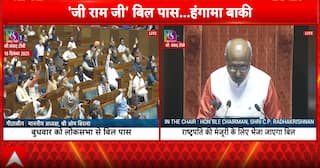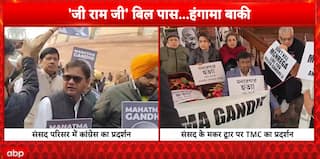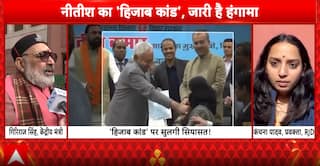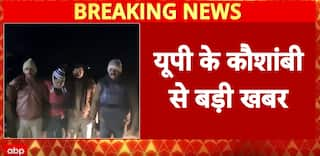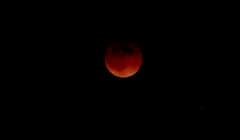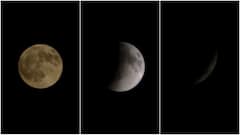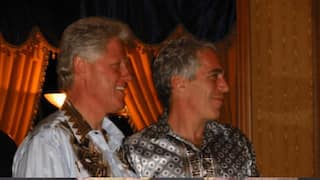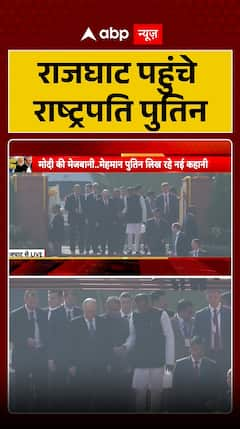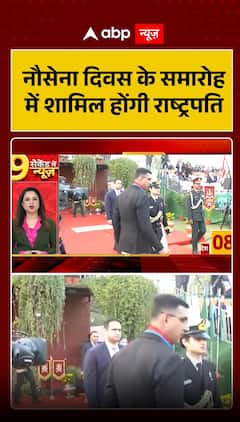National Science Day 2022: 15 Things To Know About CV Raman, Nobel-Winning Physicist Behind The Raman Effect
Indian physicist Chandrasekhara Venkata Raman was awarded the 1930 Nobel Prize in Physics for his work on the scattering of light and for the discovery of the Raman Effect.

New Delhi: Indian physicist Chandrasekhara Venkata Raman was awarded the 1930 Nobel Prize in Physics for his work on the scattering of light and for the discovery of the Raman Effect. Every year, National Science Day is observed on February 28 in India, to commemorate the discovery of the Raman Effect.
Sir CV Raman announced the discovery of the Raman Effect on February 28, 1928. He was awarded the 1930 Nobel Prize in Physics "for his work on the scattering of light and for the discovery of the effect named after him," the Nobel Prize organisation said on its website.
In 1986, the National Council for Science and Technology Communication (NCSTC) asked the then Government of India to designate February 28 as National Science Day.
National Science Day was celebrated for the first time on February 28, 1987.
Here are 15 interesting facts you need to know about Sir CV Raman.
1. CV Raman Was Immersed In An Academic Atmosphere From The Beginning
Raman was born at Tiruchirapalli in Southern India on November 7, 1888. His father was a lecturer in mathematics and physics, as a result of which Raman was immersed in an academic atmosphere from the start.
2. Raman Topped His BA Examination & Won A Gold Medal In Physics
In 1902, Raman entered Presidency College, Madras, and in 1904, passed his BA examination, winning first place and a gold medal in physics, according to the Nobel Prize organisation.
He obtained his MA degree in 1907, with the highest distinctions.
3. Raman Carried Out His Earliest Research As A Student
The two fields of investigation to which Raman dedicated his entire career were optics and acoustics. He carried out his earliest research in optics and acoustics while he was a student.
4. Raman Had Joined Indian Finance Department
In 1907, Raman had joined the Indian Finance Department. This is because at that time, a scientific career did not appear to present the best possibilities.
Despite the fact that the duties of his office took most of his time, Raman found opportunities for conducting experimental research in the laboratory of the Indian Association for the Cultivation of Science at Calcutta.
In 1919, Raman became Honorary Secretary of the Indian Association for the Cultivation of Science at Calcutta.
5. Raman Was Offered The Palit Chair of Physics
In 1917, Raman was offered the newly endowed Palit Chair of Physics at the University of Calcutta. The Palit Chair of Physics is a physics professorship in the University of Calcutta, and is named after Sir Taraknath Palit, who donated an amount of Rs 1.5 million to the university.
Raman decided to accept the post, and became Professor at the Indian Institute of Science at Bangalore after spending 15 years in Calcutta, from 1933 to 1948.
6. Raman Established His Own Research Institute At Bangalore
In 1948, Raman founded the Raman Research Institute in Bangalore. It began as an institute privately owned by Raman, and is now funded by the government of India.
7. Raman Founded A Scientific Journal
In 1926, Raman founded the Indian Journal of Physics. The physicist trained hundreds of students who found important posts in universities and government in India and Myanmar (Burma).
8. Raman Was Associated With The Indian Academy Of Sciences
Raman sponsored the establishment of the Indian Academy and had served as President since its inception.
He also initiated the Proceedings, a journal published by that academy, in which much of his work has been published.
He also served as the President of the Current Science Association, Bangalore, which publishes Current Science (India).
9. Raman Wrote On Musical Instruments
According to the Nobel Prize organisation, some of Raman's early memoirs appeared as Bulletins of the Indian Association for the Cultivation of Science. For instance, there were bulletins dealing with the "Maintenance of Vibrations", and with the theory of the musical instruments of the violin family.
Raman also contributed an article on the theory of musical instruments to the eighth volume of the Handbuch der Physik, 1928.
10. Raman's Work On Molecular Diffraction Of Light Led To The Discovery Of The Raman Effect
In 1922, Raman published his work on the "Molecular Diffraction of Light". This was the first of a series of investigations with his collaborators which ultimately led to discovery of the radiation effect which bears his name, the Raman Effect. Raman discovered the radiation effect on February 28, 1928.
His work on Raman Effect was published in the Indian Journal of Physics in 1928. Raman was awarded the 1930 Nobel Prize in Physics for the discovery of the Raman Effect.
11. Raman Conducted Research On Acoustic Waves, X-rays
Other investigations conducted by Raman included experimental and theoretical studies on the diffraction of light by acoustic waves of ultrasonic and hypersonic frequencies, and those on the effects produced by X-rays on infrared vibrations in crystals exposed to ordinary light.
12. Raman's Laboratory Death With Properties Of Diamond
Raman had studied the spectroscopic behaviour of crystals. In 1948, he approached the fundamental problems of crystal dynamics in a new manner.
Raman's laboratory dealt with the structure and properties of diamond, the structure and optical behaviour of numerous iridescent substances, such as labradorite, pearly feldspar, agate, opal, and pearls.
13. Raman Was Also Interested In Other Fields
Raman was interested in fields such as the optics of colloids, electrical and magnetic anisotropy,and the physiology of human vision.
14. Raman Was Honoured With Memberships Of Scientific Societies & Knighted
In 1924, Raman was elected a Fellow of the Royal Society of London. He has also been honoured with a large number of honorary doctorates.
In 1929, Raman was knighted. He became a member of the Pontifical Academy of Sciences, Vatican City, in 1961.
15. Raman Was The Uncle Of A Physics Nobel Laureate
Raman was the uncle of Subrahmanyan Chandrashekhar, who was awarded the 1983 Nobel Prize in Physics, with William Fowler. Subrahmanyan Chandrashekhar was awarded the Nobel Prize "for his theoretical studies of the physical processes of importance to the structure and evolution of the stars".












